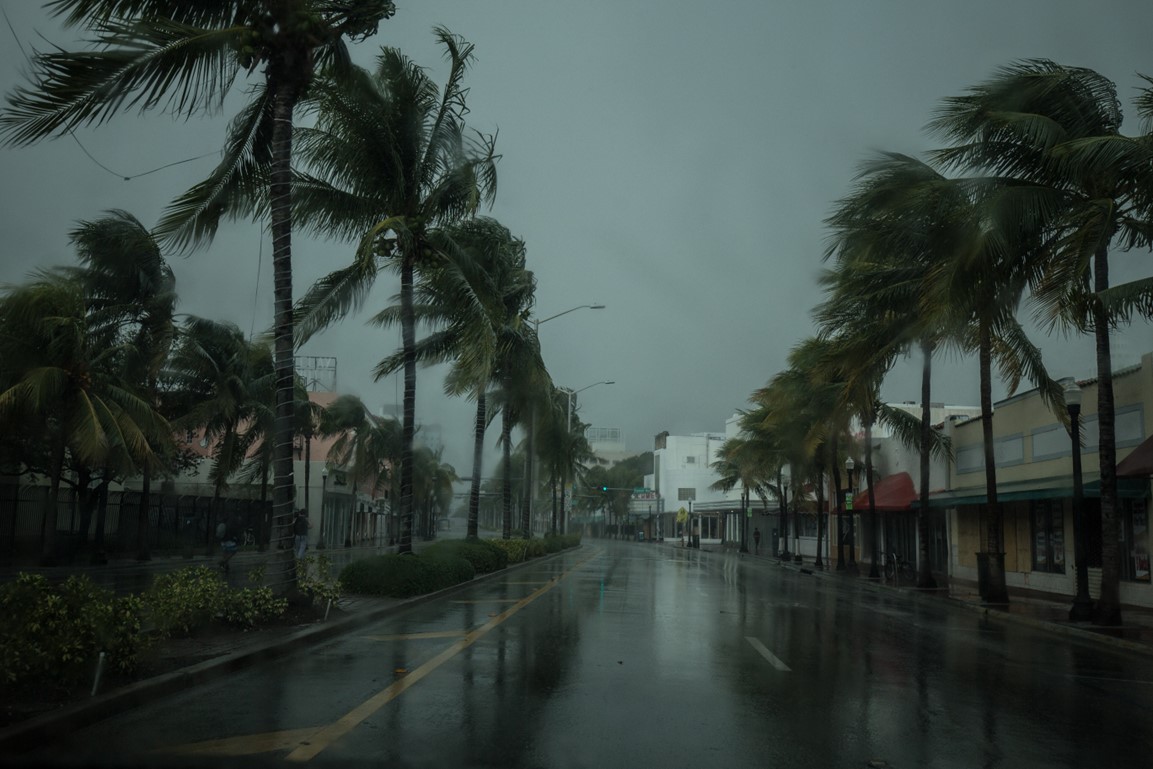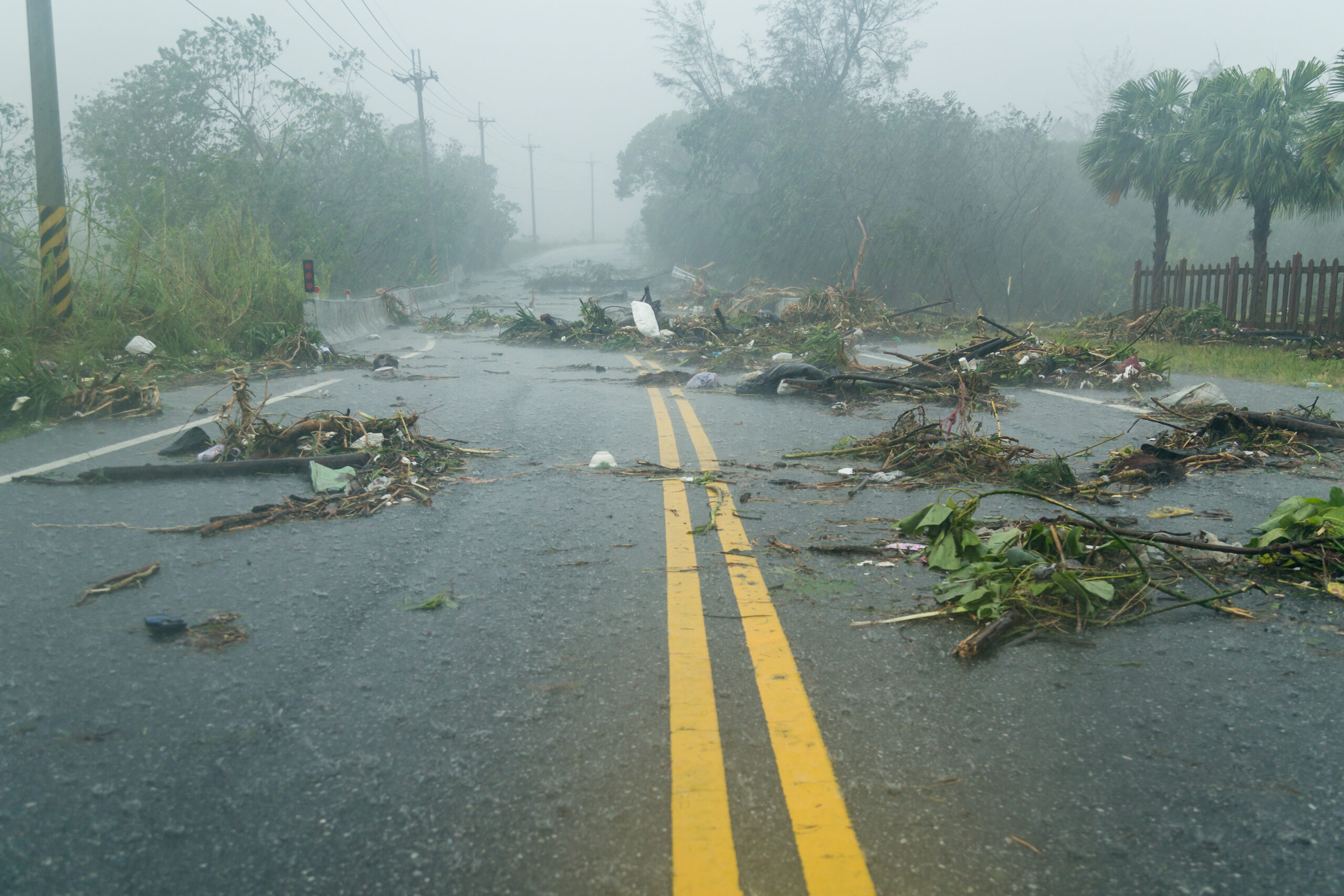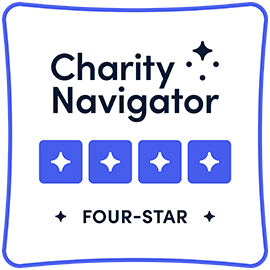Community pharmacies and pharmacists play a distinct role in our health care system with established relationships with patients and local, state, and federal departments of health as well as accessible distribution networks that remain critical during a PHE. 94% of Americans live within 5 miles of a retail pharmacy and there are over 60,000 community pharmacies in the U.S. 24 hours a day, 7 days a week, patients of all ages with varying medical conditions visit a community pharmacy for medication inquiries, acute and chronic treatments, and basic clinical assessments. Post-disaster, there is an increased demand for drugs used to treat chronic medical conditions and lack of access to routine health care is a leading cause of mortality. Success in the disaster response after Hurricane Katrina was partly attributed to pharmacy continuity services – allowing patients to receive prescriptions from their community pharmacist who ensured safety and accuracy while avoiding crowding of emergency departments.
The best way to leverage existing resources to mitigate short-term and long-term consequences of a PHE is to properly educate and inform pharmacists of their responsibilities prior to a PHE. The purpose of this paper is
- To understand the need for all states (including the District of Columbia) to clearly define emergency prescription refill protocols and allow pharmacists to dispense an emergency 30-day supply of medications, specifically during times of a public health emergency, and
- To understand the need for emergency refill protocols to be readily available to pharmacists and the public.
Overview of Pharmacy Laws and Regulations
The profession of pharmacy is largely regulated by state boards of pharmacy and departments of health with their frameworks set forth by state legislation. Several federal laws affect the practice, specifically in reference to trade and the handling and dispensing of controlled substances. Federal legislation regulates pharmacy practice by limiting interstate commerce of medications to those that are deemed safe and effective through the Food, Drug, and Cosmetic Act of 1938 and the Interstate Commerce Clause. There are various laws requiring certain standards for federal reimbursements for Medicare and Medicaid prescriptions. The Controlled Substances Act regulates narcotic prescriptions, which will not be discussed in this paper. If disparities exist between federal and state laws, the stricter requirement must be followed.
Individual states are allowed to define pharmacy practice and regulate the pharmacy profession based on the Tenth Amendment of the U.S. Constitution. State regulation includes licensing of pharmacists and technicians, issuing permits to distributers, establishing disciplinary grounds and sanctions, defining scope of practice and practice standards, and for the purposes of this paper, setting regulations for emergency prescription refills without physician authorization during a public health emergency. State laws are usually more general and are enacted through the state legislative process. State boards of pharmacy, usually under the state department of health, implement the law through more specific and detailed rules and regulations.
When a disaster strikes, the local government responds first to supply the needs of the public. If local resources are exhausted, State and/or Federal assistance may be requested. Governors will declare a state of emergency wherein state legislation may be suspended to adequately respond to the disaster. If state resources become exhausted, states are responsible for coordinating with the Federal government for additional aid. If the President of the U.S. or the Secretary of the Department of Health and Human Services declares a federal state of emergency, all local, state, and federal legislation is suspended. Depending on what level the response activation is initiated (local, state, or federal), pharmacists will be under the jurisdiction of the entity responsible for the response activation. During a Governor’s emergency declaration, the Governor’s office will coordinate with the board of pharmacy or state department of health to enact emergency legislation regarding pharmacists’ roles during the response.
Emergency Prescription Refill Protocols
During times of disaster, community pharmacies can expect a surge of patients, staffing and technological issues, resource allocation needs, and breakdowns in the supply chain which makes emergency preparedness and planning in the pharmacy of utmost importance in order to ensure continuity of care and reduce any additional hospital burden due to disease complications. When contact with prescribers cannot be made, pharmacists play a key role in assessing the need for emergency refill prescriptions and initiating or modifying drug therapy for patients with chronic illness through their accessibility, expertise, and experience. A limited needs assessment by the Centers for Disease Control and Prevention showed that hypertension/cardiovascular disease, diabetes, rash, and asthma/chronic obstructive pulmonary disease, were among the top 10 conditions affecting the people persons staying in Hurricane Katrina evacuation centers. Pharmacists have the knowledge and experience to treat the diseases listed above and many others.17
An emergency prescription refill is defined as dispensing a prescribed drug without practitioner authorization, if in the pharmacist’s professional judgment, the prescription drug is essential to the maintenance of the patient’s life or to the continuation of therapy. An emergency prescription refill is necessary during normal day-to-day operations when contact with the authorizing practitioner cannot be made. During a PHE, the need for emergency prescription refills for chronic medical conditions is amplified as disaster-affected patients typically have only 1-2 days disaster reserves of medication for chronic illness and lack access to routine health care. It can be difficult for patients with chronic illnesses to build up prescription medication reserves due to insurance policy restrictions and the lack of planning based on the acuity of the disaster. Subsequently, this creates a greater burden on community pharmacies during a disaster.
Emergency Prescription Refills by State
After a national review of state laws and regulations of pharmacy practice (including the District of Columbia), board of pharmacy and state department of health websites, it is clear that emergency prescription refill protocols during a public health emergency vary widely state-by-state and are poorly organized.
- 12 out of 51 states (including the District of Columbia) have laws or regulations that pertain to emergency prescriptions specifically during a public health emergency.
- Of these, laws in 10 states specifically state the emergency prescription law is activated when the governor declares a state of emergency. These 10 states allow for up to a 30-day supply or “reasonable quantity” of medication dispensed without provider authorization.
- North Carolina allows pharmacists to supply up to a 90-day supply of an emergency refill due an “interruption of medical services”.
- New Hampshire specifies the emergency prescription refill law is activated when a natural or man-made disaster prohibits the pharmacist to contact the practitioner, but only allows for a 72-hour supply to be dispensed.
- 23 out of 51 states have laws or regulations that allow a general emergency prescription refill.
- Of these, 5 states allows for pharmacists to dispense a minimum or sufficient quantity necessary for the emergency period with those quantities to be determined by the pharmacists.
- Of these, 3 states allow for a 7 or 10 day supply to be dispensed.
- Of these, 15 states allow for only a 72-hour supply to be dispensed.
- 16 out of 51 states do not have any laws or regulations pertaining to emergency prescriptions.
Emergency Prescription Refill Laws by State | |
Allowed during a specified public health emergency | Arizona, California, Florida, Kentucky, Louisiana, Maryland, New Hampshire, North Carolina, Oklahoma, Oregon, South Carolina, Texas |
Allowed during non-specified emergencies | Alabama, Arkansas, Colorado, Connecticut, Delaware, Georgia, Idaho, Indiana, Iowa, Kansas, Mississippi, Missouri, Montana, New Jersey, New Mexico, North Dakota, Ohio, Pennsylvania, Rhode Island, Tennessee, Utah, Washington, West Virginia |
No laws allowing emergency refills | Alaska, Hawaii, Illinois, Maine, Massachusetts, Michigan, Minnesota, Nebraska, Nevada, New York, South Dakota, Vermont, Virginia, Wisconsin, Wyoming, District of Columbia |
Although we see a majority of states allowing for emergency prescription refills, these emergencies are for non-specified emergencies. The intent behind the law in such situations generally applies to everyday “emergencies” wherein prescriber contact cannot be made and a 72-hour emergency supply is authorized to allow for continuity of care through a weekend or until an appointment can be made. In order to adequately prepare for a disaster response, wording in laws or regulations must be specific to a public health emergency which can last for extended periods of time beyond 72 hours.
Table 2. Days Supplied Allowed by Emergency Prescription Laws (regardless of emergency specified) | |
Reasonable quantity | California, Delaware, Idaho, Indiana, Iowa, Montana |
>30-day supply | Arizona, Florida, Kentucky, Louisiana, North Carolina, Oklahoma, Oregon, Texas |
7 to 15-days supply | Kansas, Maryland, Missouri, South Carolina, West Virginia |
72-hour supply | Alabama, Arkansas, Colorado, Connecticut, Georgia, Mississippi, New Hampshire, New Jersey, New Mexico, North Dakota, Ohio, Pennsylvania, Rhode Island, Tennessee, Utah, Washington |
Not allowed | Alaska, Hawaii, Illinois, Maine, Massachusetts, Michigan, Minnesota, Nebraska, Nevada, New York, South Dakota, Vermont, Virginia, Wisconsin, Wyoming, District of Columbia |
The number of days supplied allowable by the law per state regardless of the type of emergency specified can be seen in Figure 2 and Table 2. More than half the states only allow for a 72-hour emergency supply or no emergency supply at all. A 72-hour emergency supply may not be adequate for certain public health emergencies. During Katrina, one health care team discovered that dispensing 14-day supplies of medications was not enough to provide continuity of care and 30-day supplies to displaced disaster victims was preferred. Moreover, pharmacists may be hesitant to dispense only a 72-hour supply due to medication-packing limitations and inventory control.
Several states have appropriate open disaster response policies that other states may look to as a model in creating their policies to maximize a pharmacist’s role and scope of practice during a PHE. The California Board of Pharmacy’s Disaster Response Policy Statement published in 2007 encourages its licensees to assist in any way they can in any emergency circumstance or disaster. This allows pharmacists to dispense a reasonable quantity, up to the pharmacists’ professional judgment, during a declared state of emergency. The Board states that the “priority must be protection of public health and provision of essential patient care by the most expeditious and efficient means,” while expecting that the highest standard of care possible will be provided. California’s open policy allows pharmacists to act on the urgency of public health disasters within their scope of practice, without being bound by legislative restrictions designed for non-emergency operations. Oregon allows pharmacists to expand beyond their dispensing role to initiate or modify drug therapy, after a consultation with any prescriber during a declared state of emergency or in an area engaged in disaster assistance. For years, pharmacists have collaborated with physicians through formal collaborative drug therapy management agreements, to serve as the primary clinical chronic disease manager as a function to improve patient outcomes in both federal and non-federal sectors.
Furthermore, if pharmacists are not aware of emergency protocols, it hinders disaster preparedness and makes it difficult to assist in management when a disaster hits. Few state boards of pharmacy or departments of health had emergency protocols for pharmacists clearly available on websites or other notification systems. Illinois and Michigan, two states with no laws or regulations regarding emergency prescription refills, allowed pharmacists to dispense a 30-day supply of emergency prescriptions during Hurricane Katrina. This was enacted through the Governor’s executive order during the state of emergency; however, these were obtained only after contacting the state directly and unavailable through public information channels. Hawaii’s Board of Pharmacy also has wording available to allow pharmacists to dispense up to a 30-day supply, as well as initiate or modify drug therapy, to be incorporated in the Governor’s executive orders during a state of emergency, but it was also only found after contacting the state individually, and not available through any public information channels. Without this information readily available, boards of pharmacy and departments of health may be overwhelmed with inquiries from both pharmacy professionals, as well as the general public, placing a strain on human resources during an already stressful time.
Actions to take
As changing or adding state laws may be a cumbersome and arduous process, all state board of pharmacies without current laws regarding emergency prescription refills by pharmacists during a public health emergency are highly encouraged to initiate the process in order to be properly prepared for disasters in the future. In the meanwhile, it may be easier to leverage state boards of pharmacy to add umbrella rules as the boards have the power to regulate pharmacy practice under current legislation. At the very least, boards of pharmacies and state departments of health must have emergency response protocols readily available and accessible for pharmacists and the public to access before as well as during an emergency to ensure adequate preparedness and minimize PHE consequences. If current law does not address pharmacists roles in PHE, historical implementation should be posted so that pharmacists have a reference for their scope of practice during disasters.
The National Association of Boards of Pharmacy (NABP) developed a “Model Emergency Disaster Preparedness and Response Plan” to assist state boards of pharmacy in preparing and responding to a PHE which include the recommendations found in Table 3. Additionally, the NABP has “Model Rules for Public Health Emergencies” which would allow pharmacists to dispense up to a 30-day supply during times of disaster. NABP strongly recommends that boards of pharmacy engage state legislature and appropriate agencies to ensure that a state’s emergency declaration contains language to trigger the activation of emergency rules related to necessary pharmacy services when appropriate.
In most cases, emergencies and disasters occur with little or no warning. In order to be best prepared, boards of pharmacy can start developing contingency plans well in advance. Specifically, boards of pharmacy should consider the following:
- Creating an emergency and disaster preparedness and response plan specifically for the board of pharmacy;
- Working with the state legislature to enact emergency dispensing and other related provisions;
- Developing and maintaining a contact list of local/state government agencies and national pharmacy organizations;
- Developing and maintaining a contact list of local/regional pharmaceutical manufacturers, wholesale drug distributors, and pharmacies that could donate and provide storage sites and transportation resources for critical drugs and supplies; and
- Educate licensees on board efforts related to emergency or disaster planning.
All stakeholders are in agreement that pharmacists can play a greater role during the disaster response. When asked about disaster preparedness efforts, pharmacists request greater leadership efforts (e.g. reimbursement protocols, training incentives) while believing that participating in emergency preparedness and response is important for members of the pharmacy profession. Insurances companies defer responsibility for patient medication continuity during a disaster to pharmacists, whom insurers saw as the most direct patient point of contact. Additionally, there exists physician support for pharmacists to take a greater role in practicing advanced clinical and primary care roles.
Conclusion
Even during normal day-to-day operations, obtaining a prescription refill can be a complicated process for a patient. By removing practitioner authorization for refills during a PHE, community pharmacists can ensure quality patient care and continuity of medical services. After the issue of prescription authorizations is resolved, there are still many barriers to medication access during times of disaster. Copayments or coinsurance may be the next hindrance. State boards of pharmacy and pharmacists should be aware of the Emergency Prescription Assistance Program, a federal program which allows access to prescription drugs and limited durable medical equipment for eligible individuals in a federally-identified disaster area at no cost to the affected individual. States are encouraged to model this program for state-identified disaster areas to ensure access to medications during a PHE. Some states have legislature related to “refill too soon” or vacation override requests and mandates that insurances companies waive these restrictions during a PHE. This is another issue for state legislatures and boards of pharmacies to explore.
Health care professionals are three to five times more willing to respond to a PHE if their role in an organization is clearly defined. If pharmacists know what their responsibilities are, they can play a larger role in community restoration post-disaster. Emergency prescription refill protocols related to a public health emergency must be clearly defined within state legislature and information must be readily available and accessible for all stakeholders involved. Pharmacists are a vital member of the health care team, and with a proper infrastructure, they can make a huge impact during a disaster and the recovery phase.







